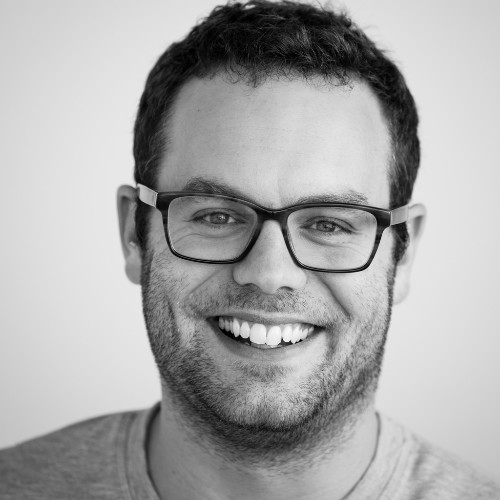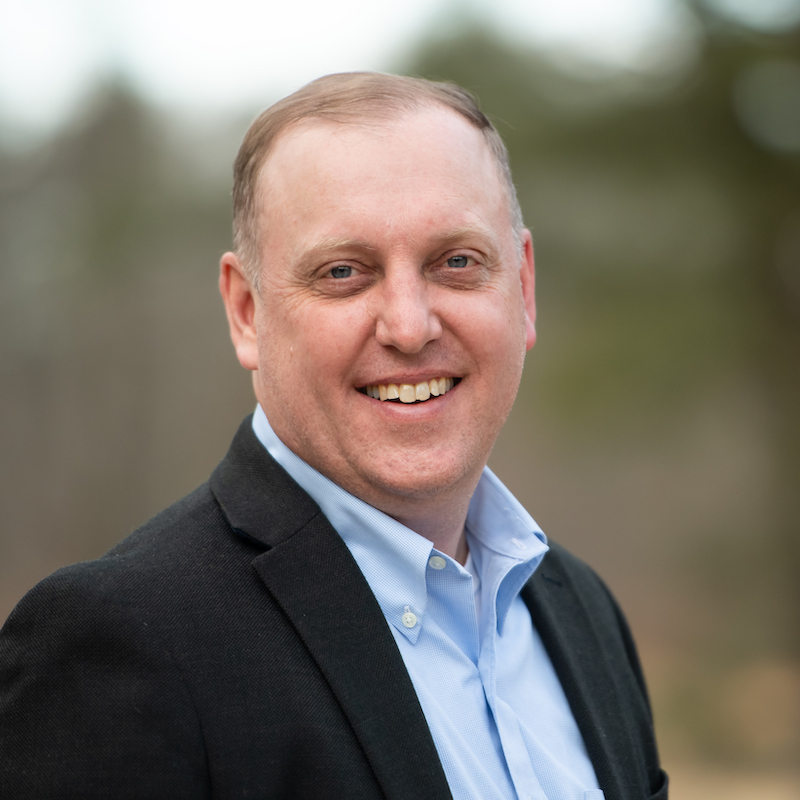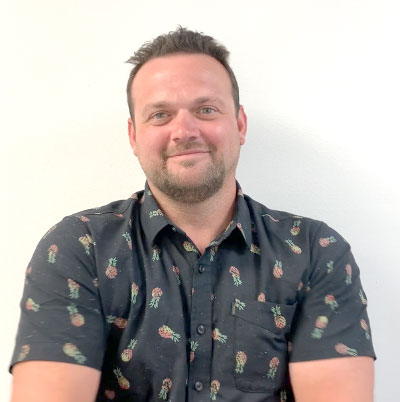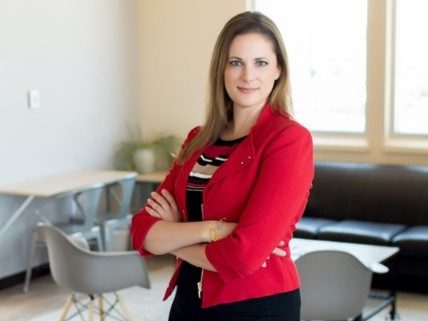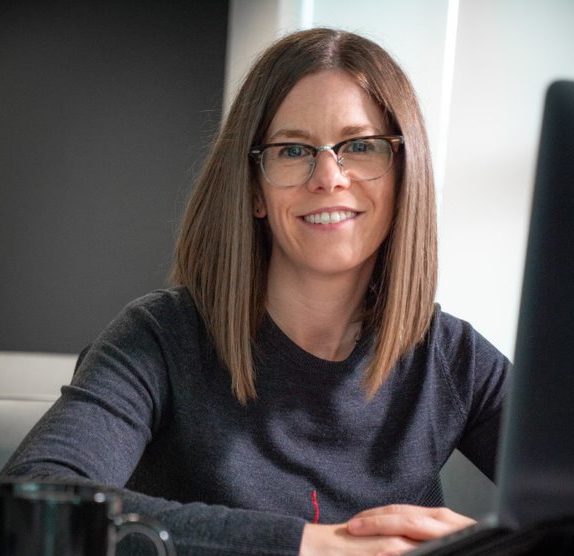Digital tools impact the way we work, and they also directly impact us as humans in ways that we don’t fully understand. We are tethered to our digital devices most of the day, but we are only beginning to understand how that is changing us.
Nina Hersher is the CEO of the Digital Wellness Institute. She’s also one of the organizers of Digital Wellness Day on May 7th where there are a lot of free sessions you can join, (including one from The Digital Workplace!).
One of the key insights from this discussion was how digital tools often put us in a reactive mode. We pick up the phone, or open our messages, looking for something to react to. We need to flip the script and use digital tools to create goodness around us as much as we use it to stay informed.
Nina also talks about the realness of the attention economy. Entire industries are built around attention, and understanding those dynamics is key to operating well in the digital world.
We also discussed how to find out if your team is experiencing burnout, and the delicate balance between enforcing rules and individual accountability.
Links
Sign up for Digital Wellness Day! Our session is at 1pm.
Check out the Digital Wellness certification. Use the code DIGITALWORKPLACEDISCOUNT to get $200 off.
Welcome back to The Digital Workplace podcast. Today our guest is Nina Hersher. She is the CEO of the Digital Wellness Institute. Hi Nina, how are you today?
I’m doing well, Neil. How are you?
Well, it’s good that you’re doing well. As we’re talking about digital wellness, we have the ‘Digital Wellness Day’ coming up on May 7th. Hopefully, we’ll be producing this podcast and then have enough people to listen to by then. But we’re so excited to have you on. There’s so much to talk about. But first, as with all of our guests, we need to prove that you’re a certified human. So, I need to ask you this question that only a human could answer. What do you miss the most about childhood?
Hmm, that is a beautiful question. I would say one of the things I miss most about childhood is being outside more. I think that as we’ve all reached adulthood and are on all of these different paths, we, for work, have to be plugged in more than ever before. And so, I sometimes miss those days of just free-flowing play outside. We had no other obligations, and we got to just bask in the glory of nature.
Yeah, absolutely. I have kids that are about nine and seven. It’s amazing just to see that they’re fine just being out there all day long. There’s no schedule to have to follow or agenda. It’s just being there and enjoying life. So, that’s cool. Definitely great. All right. You pass. Good job. So, tell us a little bit about yourself, Nina. Where do you come from? How do you get to be the CEO of Digital Wellness Institute? That’s a crazy job.
Yeah. Well, I had a lot of fun getting here. Some of it was a little tumultuous, but I wouldn’t change a thing. So, I’ll say that upfront, when we’re talking about digital wellness, we’re really referring to, what is the optimum state of health and well-being that each individual using technology is capable of achieving. And so that being the context, I reached this field through a highly personal journey.
So, I would say that from about age four to age 12, I had a really, really hard time speaking, and I’ve been in speech therapy since I was a small child. And sometimes it could take me a long time to even say a word. And I was also an only child. So, I spent a lot of time around adults, and I used eye contact to really let all ages know that I was trying to communicate with them when I was having a hard time speaking. And I noticed a big drop off in eye contact as texting became more prevalent, where sometimes people wouldn’t even know that I was trying to speak to them because they were so plugged in to their phones. And so, that being the event that led me to so much of this work. I was horrified and captivated and intrigued by what I was seeing.
So, I’m from the East Coast originally. I went to a college called Brandeis. I was looking for this phenomenon and I was seeing Neil, and I couldn’t quite find it at Brandeis. So, I went abroad to the University of Edinburgh, in Scotland, and they have amazing classes in youth culture. And I remember the teacher talking about, you know, how we used to say ‘hello’, and that phone was attached to a wall. And even just with the invention of a cordless phone, so much changed, including the content of the conversation, where you could bring the phone in the house, how long it could be. And I was like, okay, we’re getting somewhere. And so, from there, I really individualized all of my training to reflect that.
I went to graduate school for social work. And I was implementing a really cool program at the WashU Health Center that looked at undergraduates’ academic achievement in relation to their usage of tech and their selfcare. And I realized that, that was all I wanted to be doing.
And so, I really created this individualized track within my graduate degree. And it was called ‘Norms of Connectivity – Reconceptualizing Human Development in the 21st Century’. And it was all about, how are these norms of communication truly changing how we interact and develop as human beings, of all ages, of all generations, in all different jobs, in all different industries. And with that in mind, how do we really embrace a healthy tech versus anti-tech approach. Because tech isn’t going anywhere. And so, how can we really build that, and what’s working, and also ask developers what we want more of to make intuitive tech design and connection a more flowing experience for people.
And so out of grad school, I started the Digital Wellness Collective, which was the only trade association of organizations, researchers, entrepreneurs doing this work. And this year, that has merged into our other company, which is the Digital Wellness Institute, as we really come together as a community to look at what does it mean to be a certified digital wellness educator. And so that is the crash course on my journey. And I have an amazing co-founder, Amy Blankson, who’s on the UN Global Happiness Council. And we brought in 26 teachers from around the world to really create all of the content that we’re offering up globally at this critical time.
Yeah. We’re excited. May 7th is a big ‘digital wellness day’. Correct? Tell us a little bit more about that.
Yeah. Digital wellness day came out of the Digital Wellness Collective originally. And so, there are all of these incredible campaigns, including the ‘National Day of Unplugging’ and things that really encourage people to disconnect so that they can practice that introspection and presence with their families. And we realized that there wasn’t yet a kind of international holiday that looked at and gave people concrete tools for how they could be in that healthy tech place and have that healthy tech approach. And so, I can share this graphic with you later on, but we have something called the ‘digital flourishing wheel’. And it basically breaks down all of the different aspects of digital wellness, all the way from mental health to environment to productivity. And so, all of those are subcategories within digital wellness. And Digital Wellness Day is when all of the companies in the collective and all of our graduates out of the Digital Wellness Institute come together, and we hold free events that are open to the public.
And so, last year was our first year kicking it off. We have a powerhouse community. So, we had over 34,000 people attend our events. And this year, we’re expecting it to be much bigger. And so right now, I think I checked this morning, we have about 37 events listed, and that event directory is still growing. And we have like some of the heads of IBM speaking. We have Harvard professors. We have a lot of our core team, our research director, Sophie, who’s a positive media psychologist, and really just diverse offerings, ranging from, how can we interpret digital body language all the way to what does it actually look like to get in flow, and to be productive when you’re working from home.
Yeah. I think you definitely tapped into something that’s important for all of us. We just hear that term ‘digital wellness’, and it means something to us. I think it means something different to a lot of different people. You touched on the idea of being anti-tech versus having a healthy respect for tech and understanding how it’s actually changed us. We talk a lot about how technology changes the way that we work, and we didn’t really realize it as it was happening. And so now, we’re left trying to figure out, okay, how do we actually first improve the way we work and then bring in these digital tools to come into us. I’m interested in your perspective on how these tools have changed how we interact as humans? And how do we have this more helpful approach than just to be totally anti-tech, throw everything away, and not take the advantage that’s in front of us?
Absolutely. And I love a complete unplugging experience, that immersive digital detox, as much as the next person. But especially right now, that’s just not sustainable. And so, there are a lot of different tips I can give surrounding that. But to your point, I think that our approach really highlights that each of us can be change agents towards a culture of digital flourishing. And that’s a combination of taking responsibility for our own action, and also looking to the tech companies and tech developers to make the changes that we’re looking for so that perhaps this tech that we’re using is a little bit less addictive. And we’ve already seen a lot of progress in that direction.
So, when I use the term ‘digital hygiene’ to a lot of CEOs who are out there, running, growing companies, immediately their eyes light up. They think, ‘Okay, this is something. Digital hygiene is something.’ But they often struggle to know what that would actually mean. So, what do you feel are some good digital hygiene tips that leaders should help their teams be aware of as they’re working?
Yes. So, I’ve heard digital hygiene and tech hygiene used pretty interchangeably. And I think that it’s also directly connected to this concept of digital wellness that we’re talking about today. And so, with my training, I talk a lot about social ecology, which is essentially about humans and our relationship with our environment.
And so, with social ecology, there are really three main tiers of that. There’s this personal realm encompassing your habits. There’s this interpersonal realm really relating to the relationships and communications between people. And then there’s that collective and structural level. And so, three of the tips I love to give are directly in line with these different tiers of social ecology. And something that people can start doing immediately on that personal realm, with their own habits is, they can consider doing and encouraging others to create a 30-minute unplugged routine in the morning or evening. And this is a way for us to really integrate like a morning ritual and an evening ritual that allows us to reclaim our time and our peace of mind.
For some people, this is harder than others. But we know that there’s so much research around having a morning ritual. And I find that even when I have to wake up half an hour earlier to do it, actually carving out that space to have my tea, to not check my phone first thing, to not move myself into that “reactive” place, helps me to be more grounded and resilient throughout the whole day as things come at me, and may do for everyone. And so, I think that’s a really big tip. And the same thing for the evening. I think something that isn’t talked about nearly enough is that when we’re falling asleep, we’re actually in a very, very late state of hypnosis. And so, if we’re falling asleep to the news, or we really just want to be aware of what’s trickling in, because not only is that going to affect our sleep, but that’s going to affect how we wake up feeling the next day.
So, that is the personal realm. And then getting to that interpersonal realm with your relationships with other people, I love to recommend, both for individuals and teams, to create a place in the home or office, that is basically your charging directory. And so, in an office, you know, we might say, ‘Okay, this whole wall is for people to plug in their electronics and while those electronics are charging, we can engage face-to-face and recharge ourselves just like we do with our phones. And if this is something that you’re doing at home with your kids, make it fun. There are no set rules around this. And so, this concept of creating an unplugged box that also doubles as a charging station is really great for families, especially, because you can turn it into an art project. You can turn it into a shark head that eats all of the electronics every evening, or whatever feels right to you. And by having that in a central kind of communal area like the kitchen or where people take a break for lunch, it supports that collective accountability because everyone’s doing it at the same time and that’s also a social area where you’re naturally congregating.
That makes a lot of sense. I think whenever you’re talking about digital tools, like “puts us in a reactive mode”, that really struck me, that oftentimes, we pick up the phone, we open up our laptop in order to respond or something. We want the stimulus to come at us, and then we’ll do something. Whereas when there’s no digital tool there, often we have to be the one that creates the stimulus or creates the space or does something. I feel like that reflects so well on how we approach work these days, is that we just expect work to come to us. And we just slash through it as it comes through. It’s like we’re waiting for those emails to come in. We’re waiting for the Slack messages to come in so that we can react to them as opposed to actually going out and creating projects, creating new things, starting things that didn’t exist before. That’s just a really interesting approach to it.
Yes, and I think that’s a beautiful point too. Because people really need to create an environment to support their behavior change, which is why something like an unplugged box, where you can also charge things, is so helpful. Because just by having our phone or our laptop in our view, we’re going to be tempted to check it to get that dopamine hit. And while we might not be intending to move ourselves into that kind of place of intensity where now we have to respond to our email, I think many of you might be able to relate that as soon as you open your email and you respond to that one email, your whole team knows you’re online, and the floodgates just open. And so, how again can we really take back our peace of mind and encourage other people to do the same so that when we do come together for these virtual meetings, we’re even more clear and we’re even more energized.
What should team leaders do? They have a fully digital team, especially over the last year, year and a half. We have people who are just for work. You’re pretty much tied to your computer or laptop yet you’re wanting to promote digital wellness among people in your team. How can you be sure that they don’t reach those morning zones of digital burnout? And what are some signs that maybe think they’re getting there? And then what can you do to pull back when all of your interactions are digital?
Yes, great question. And that’s actually directly linked to this third tier of social ecology. So, for this, we really encourage team leaders to work with their employees to create this idea of a team or a communication charter. And this is something that seems like the most natural thing in the world, but life gets hectic, right? Sitting down for an hour and talking to everyone on your team and actually figuring out what time zone is everyone in. If something is urgent, is it okay to text? Otherwise, what are the norms of communication? Can we come together around using one tool like Slack instead of using WhatsApp and Slack and Hangouts, and all of these other tools. Because the attention economy is real, and it is distracting. And so, how can we basically carve out time as a team to decide what are the norms of communication that work best for us, and then what hours are people going to be offline. And if people can’t be offline completely, maybe there’s one person who’s on call, and that person rotates each week, because the hustle life is real. And so, that’s something that we really encourage leaders to look at, because that organizational and culture change is going to start with them.
And that’s also one of the workshops that we offer out of the Digital Wellness Institute. But people can start that process internally. And it helps people know that they’re not alone in feeling they’re sometimes a little bit too on call and a little bit too exhausted.
And so, to your point about the different warning signs that people might encounter, someone might be experiencing headaches, because they’re experiencing so much blue light exposure, because they’re experiencing Zoom fatigue. And so, headaches are a big sign that something’s not quite right. Maybe they’re not taking their lunch break to exercise or to eat. And so also, how can the leaders of organizations really model the behavior that they want to see in their employees. Because if they’re not doing it, it’s going to be really hard for other people to feel comfortable doing it, even if they’re being encouraged via email, or out loud.
I think that’s very important, especially because a lot of times, I don’t know when people on my team take lunch. I don’t know if they’re taking a break and going for a walk. I encourage it, but I haven’t enforced that and asked them to tell me about that. If somebody would want to, that’s one thing. But really to, like you said, to model that, I try to do this. If people are on vacation or if I’m on vacation, just let people know, even talking about that, like, ‘You can’t get in touch with me. I will not be accessible. Good luck with everything. See you.’ And modeling that. As opposed to saying, ‘You know, I’m going to be gone. Text me if you need something. I’ll be here and there.’ And then you check in throughout the time. Not only is that bad for you, but that’s bad modeling for the rest of the team that’s out there.
Absolutely. And there’s so much emotional charge in that because we often feel like we have to be on call, or we might lose our job. And so, this is one of the reasons that having this type of a conversation with your team can be so, so powerful. Because people are looking for their experience to be normalized. And it’s much easier to make change if you’re making that change as a group.
One question I feel like is always a little bit touchy is, how much of this do you try to enforce through policies? And how much of it do you say, ‘You are adults. Here’s what we know is healthy. You make the best decisions for you.’ I feel there’s even conversations going on in other terms about this, like, how do you be encouraging of good habits without being too patronizing about those types of things? So, what’s your feeling? Is it better to have strict policies, like, you must be offline during these times? Or do we just put the best information in front of people and hope they choose well?
Yes. That is a really tricky one. And for every organization and for every industry, the norms are going to look very different. But we’re seeing some really interesting policy work being done in Europe and Australia. They seem to be a little bit ahead of us on this one. And the idea of this ‘right to disconnect’ as actually being a policy, so that people don’t feel like they have to be plugged in after 6pm, or 7pm, or 8pm, and that being the norm for employees that is enforced by law. But I think policies and laws aside, with organizations and what they want to do on the more individual organizational level, we’ve seen a lot of success in organizations opting to have one day of the week be ‘meeting free’. Because people do need more time for deep work. And when we’re in meetings constantly, sometimes it can be hard to even follow up with an email on the meeting that just happened before. And so, we’re seeing companies say, ‘Okay, please block off at least 10 minutes after your meeting to take a break or send that email.’ And you can chat with your colleagues on Slack if you want to, but unless it truly is urgent, this is deep work time for you.
Yeah. It’s a great practice. Like today is Wednesday when we’re recording this, and that’s my day for no meetings. And there was an article that I’ve been trying to write and just have not been able to do it. But today, I finally got to it because I had back-to-back sessions of nothing else planned to be able to do and realizing how important that is to be able to have that time. So yeah, it’s a great suggestion to come through. Nina, tell us a bit more if people are interested in ‘Digital Workplace Day’, where should they go to learn about it, to jump in and hear some of these awesome discussions that are going on?
Absolutely, yes. You can just visit digitalwellnessday.com and you will see an event directory. So, the day is entirely free. We have events happening all day. We have events happening currently in English, Spanish and Russian. And we might even add a few more languages to the mix. And ‘digital wellness day’ also overlaps with something in the US that’s called ‘screen-free week’. And so that’s being adapted right now because of COVID. But we’re also going to be holding a workshop on that Friday, May 7, to talk about how people can use the screen-free week resources from one of our partner orgs to actually power off over the weekend and what that might look like.
And so, for anybody who wants to check it out, you can go to digitalwellnessday.com. And then digitalwellnessinstitute.com is where we offer a digital wellness certification program for people who are looking to educate others on the topic. And I guess, lastly is, we just partnered with Athabasca, which is the top online learning University in Canada to create a digital wellness one-on-one course, that’s just an hour and a half. And so, you can also learn all about that on the Digital Wellness Day website. And if anybody has questions, you’re welcome to reach out to me directly at [email protected].
Those are great links and I definitely encourage everyone listening in to check them out, but don’t just do it individually, do it with your team. Find some things. Have this be an open discussion. Start a discussion after you hear this just to say, okay, what can we do to improve this? Because I think we all recognize this is something we want to get right. We don’t want to push forward for the next 10-20 years and lose our humanity because of how we’ve lost it to digital tools, but to be able to actually use them to become more human in these ways you’ve talked about. Nina, thanks so much for being on the show. We really have enjoyed you a lot and we look forward to having you back again in the future and learning more about how we can approach this digital age better.
Thanks so much, Neil. Pleasure being here today. I look forward to chatting with you soon.
Nina Hersher is CEO of the Digital Wellness Institute and co-founder of the Digital Wellness Collective, the only global network for Digital Wellness researchers and experts. Hersher is an internationally renowned speaker and leading expert in Digital Wellness, holding a specialized MSW from Washington University in St. Louis in Norms of Connectivity and Reconceptualizing Human Development in the 21st Century. Hersher is also Founder of Evolving in the Digital Age™, a consulting firm dedicated to best practices in mental health in a fast-paced world. She holds additional credentials as an Oasis in the Overwhelm Facilitator, Teen Outreach Program Facilitator, and Meditation Teacher. Most recently, Hersher’s work was in publications including The Stanford Social Innovation Review, Al Jazeera, and Voice of America.








